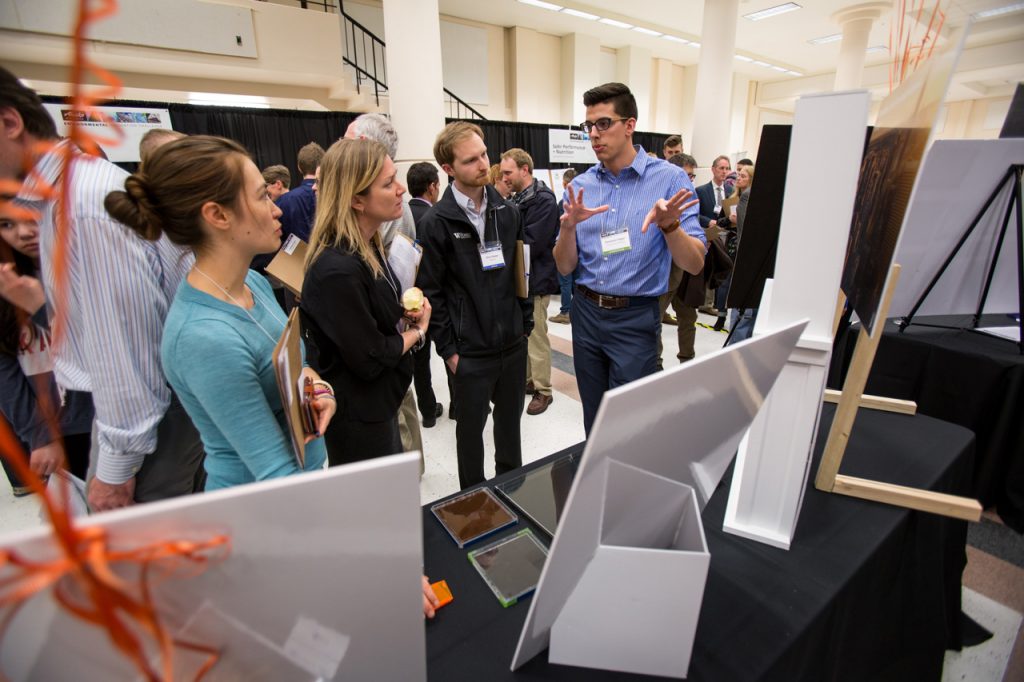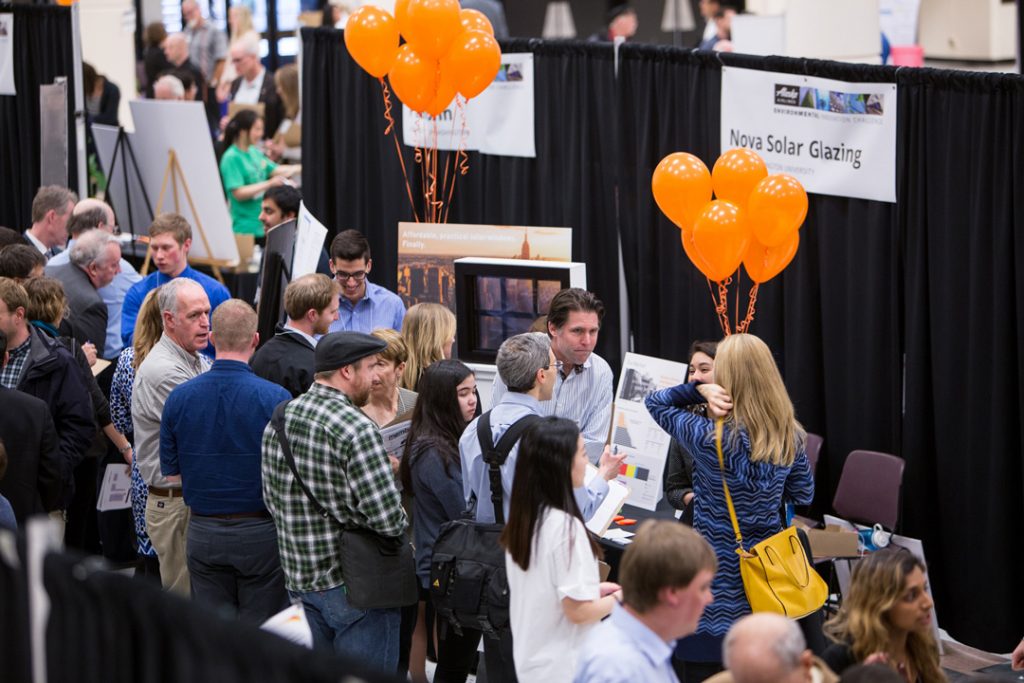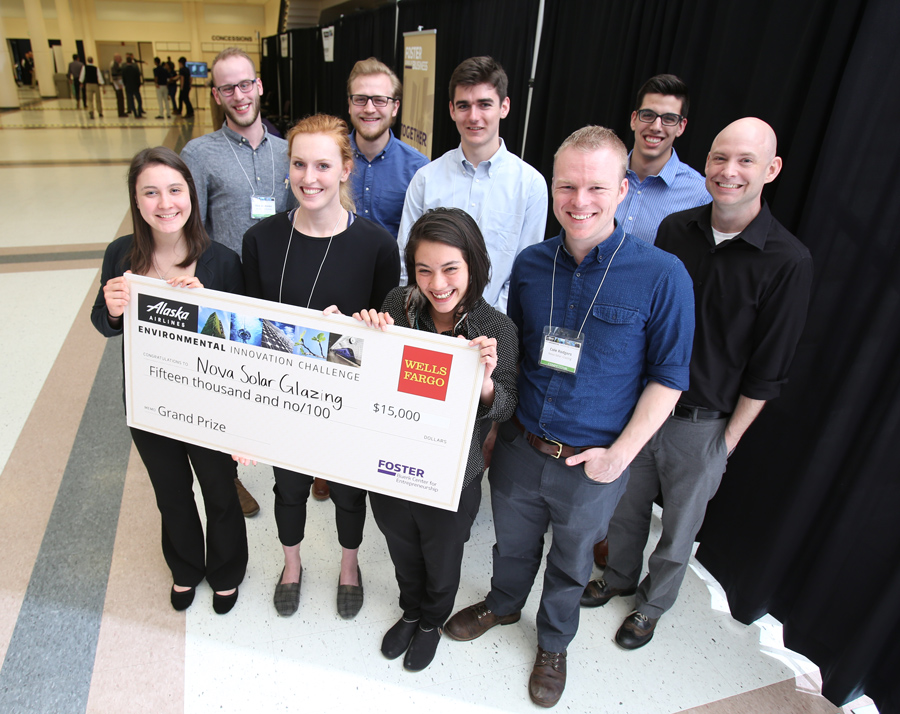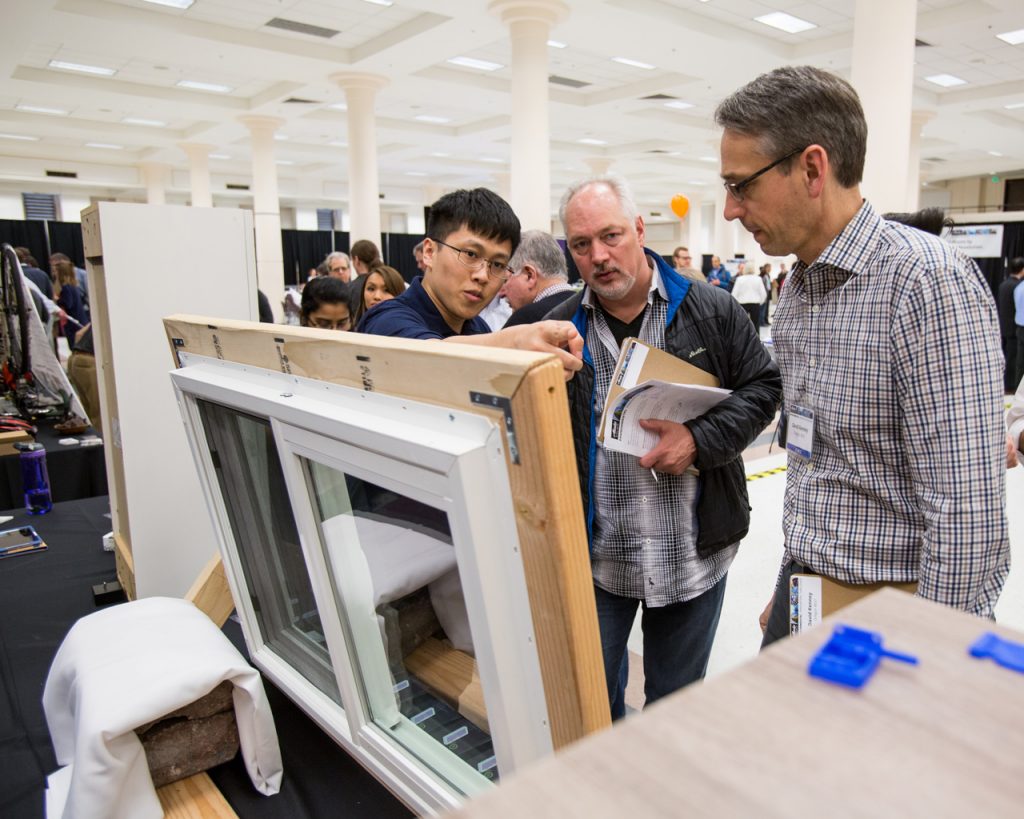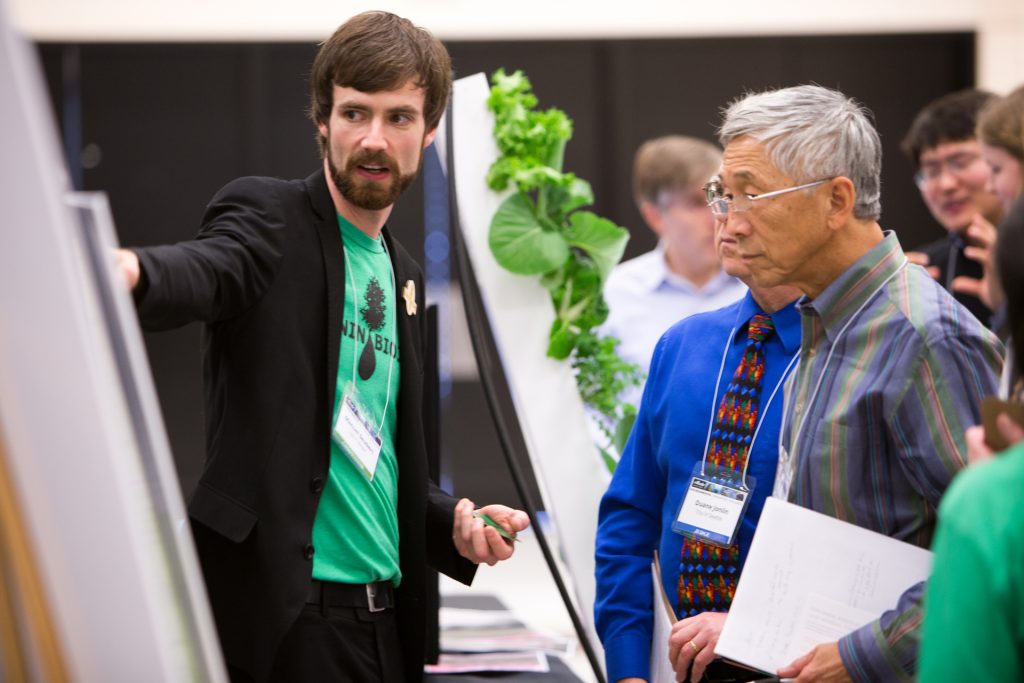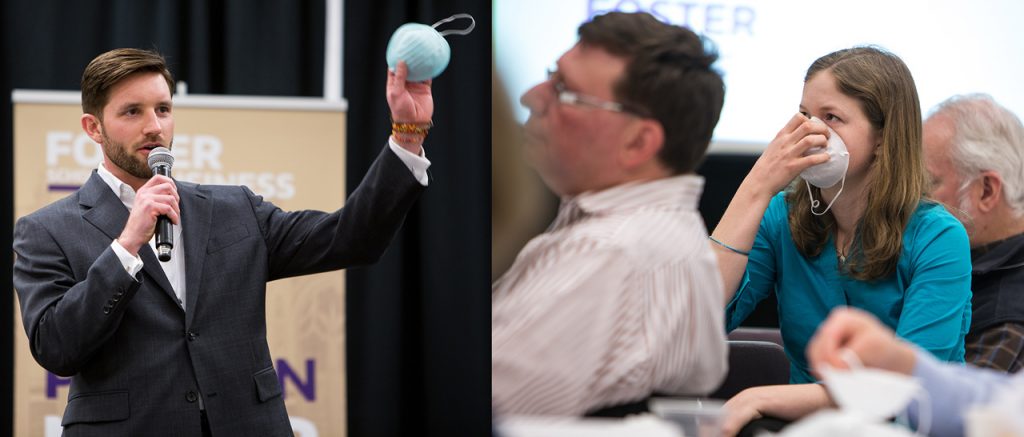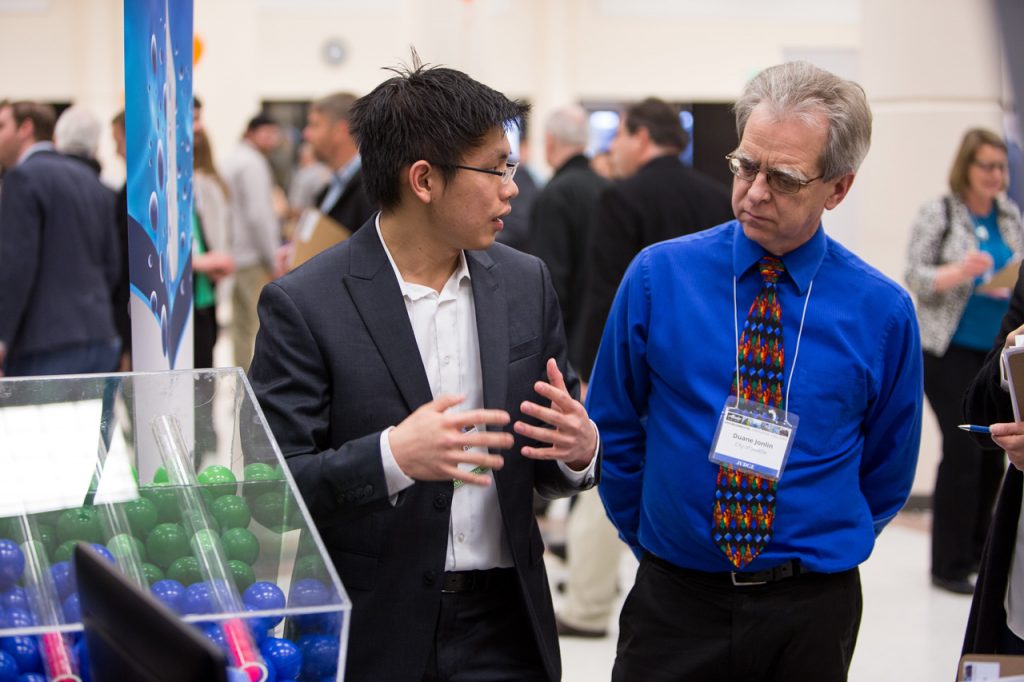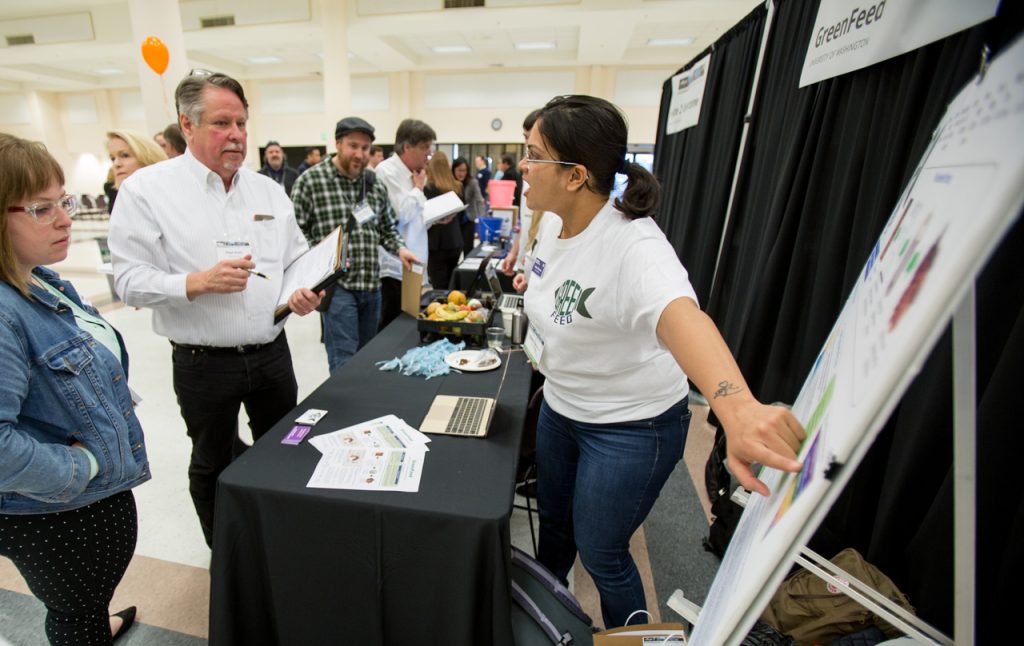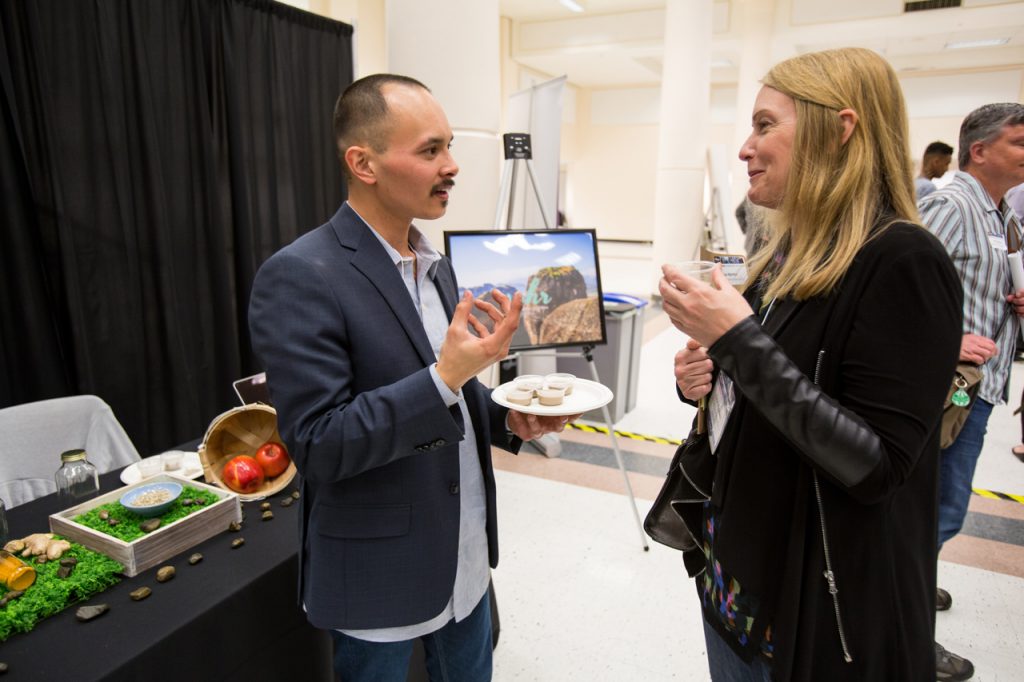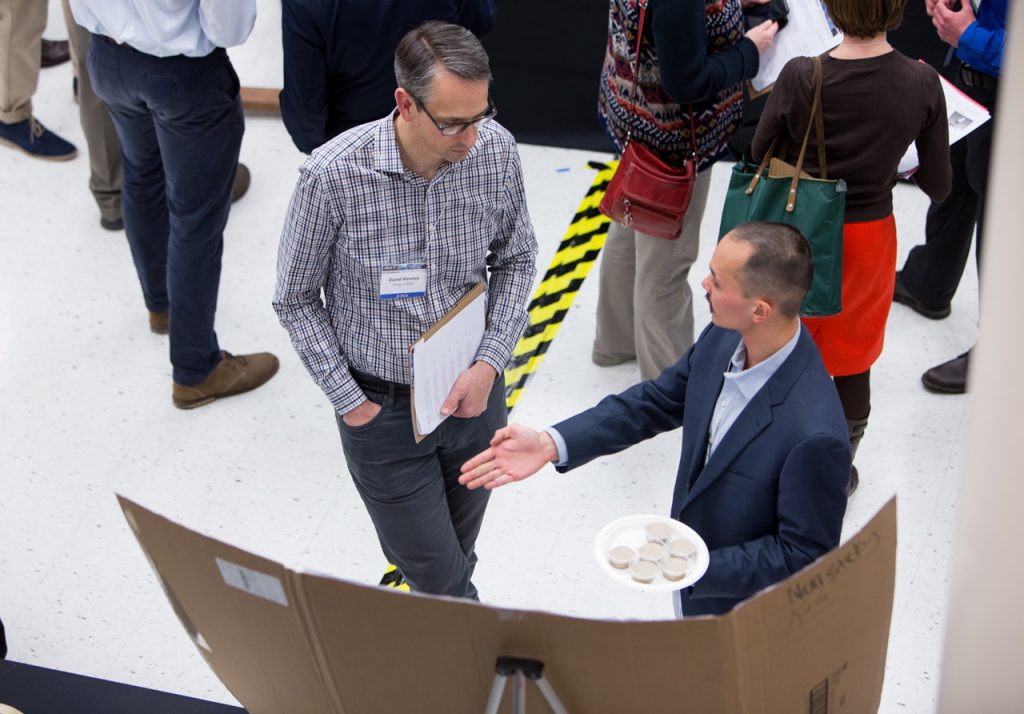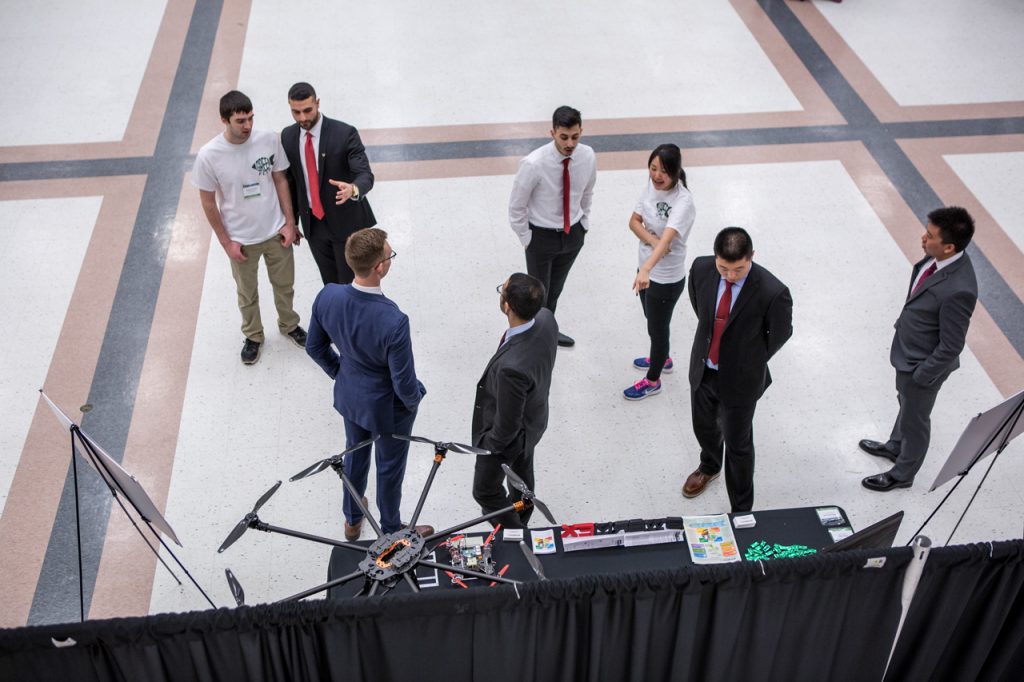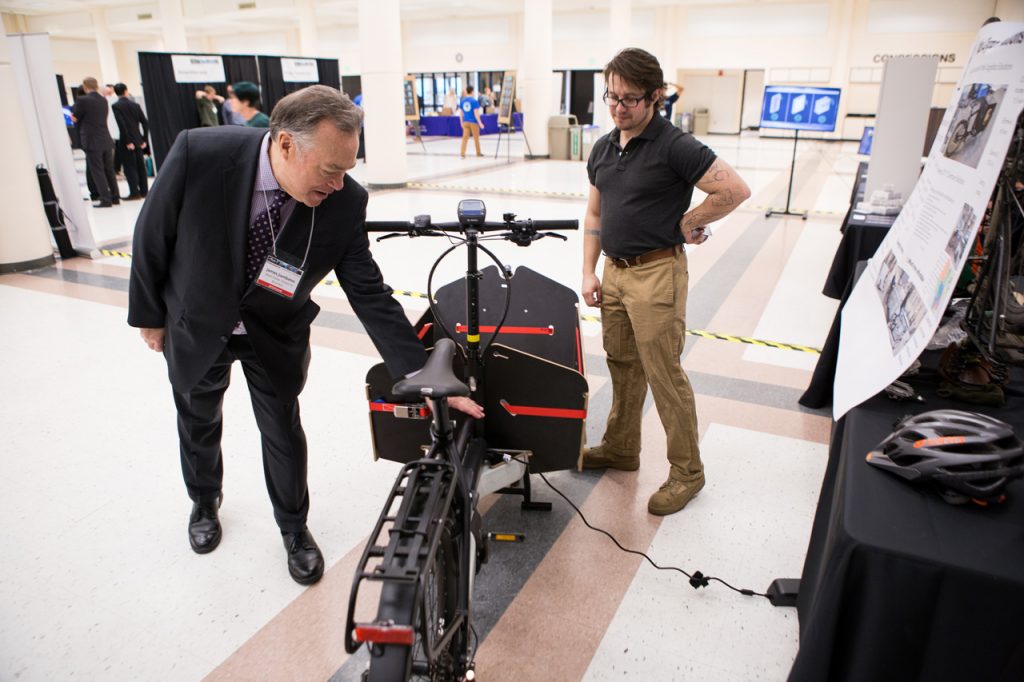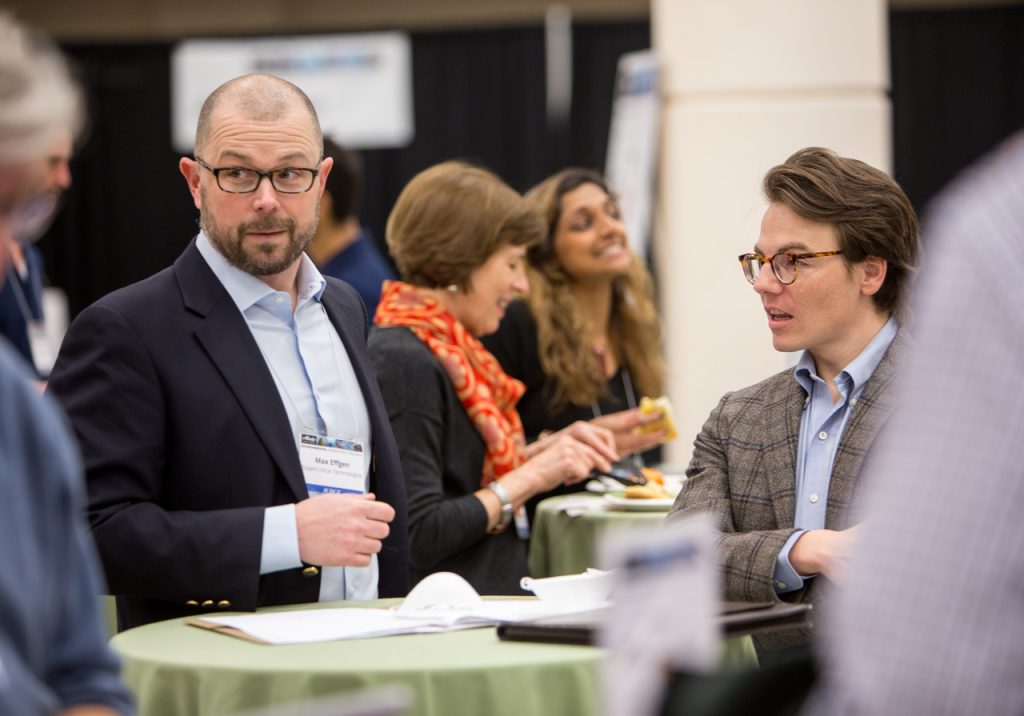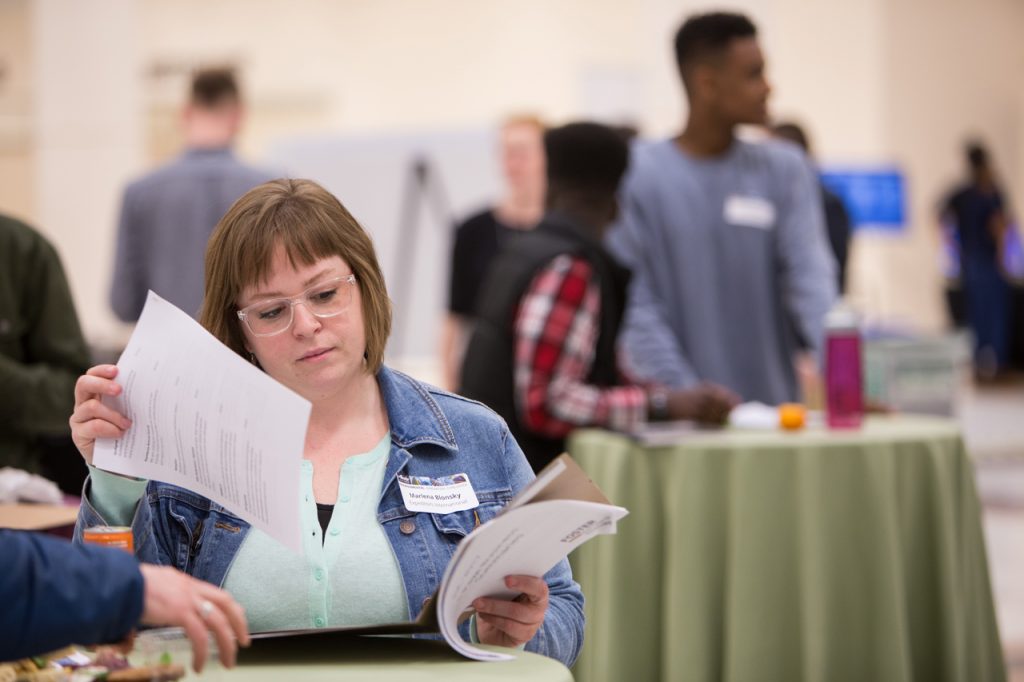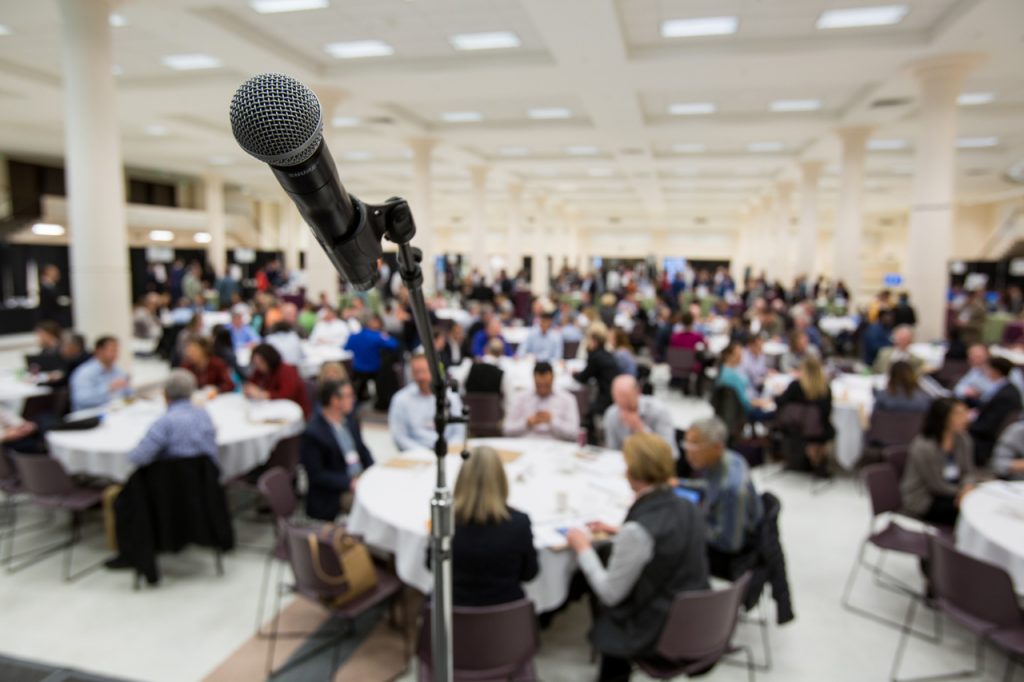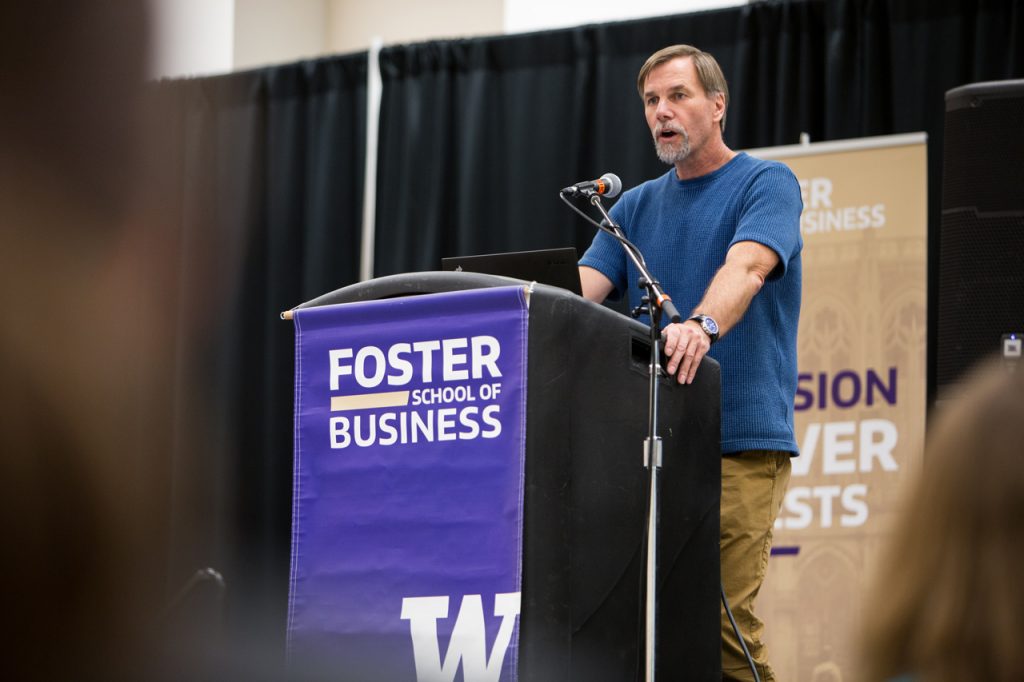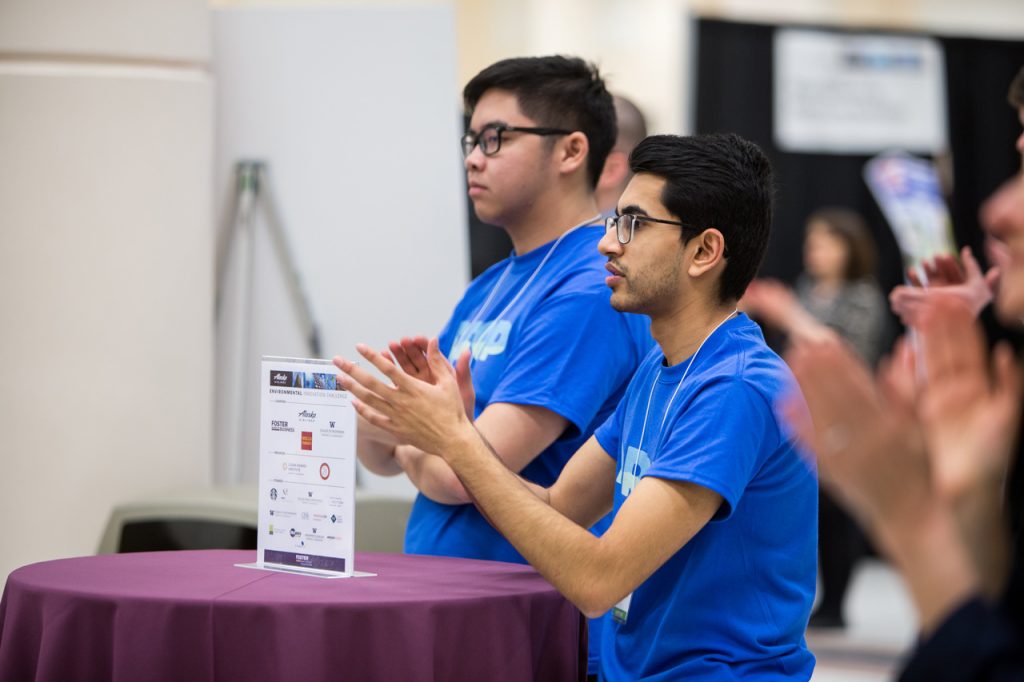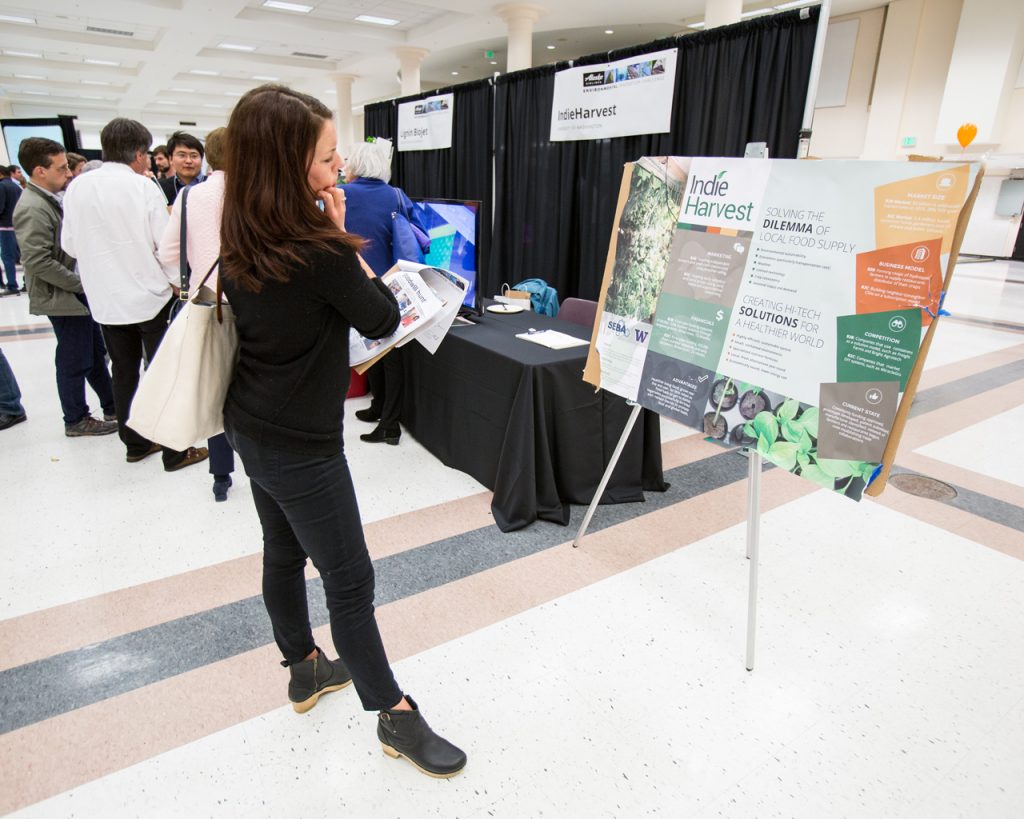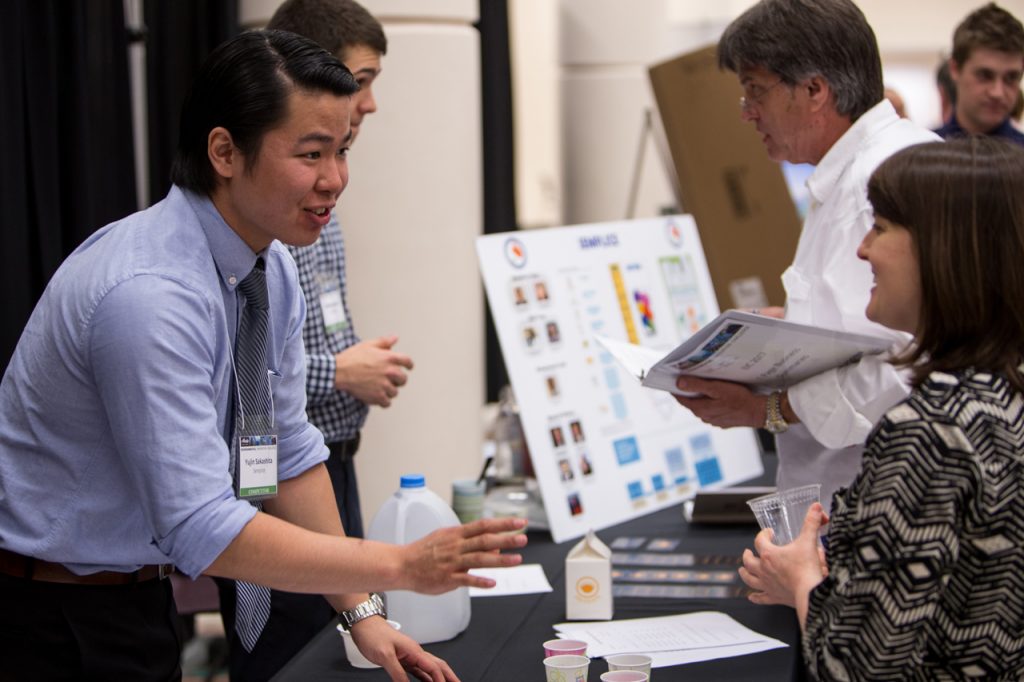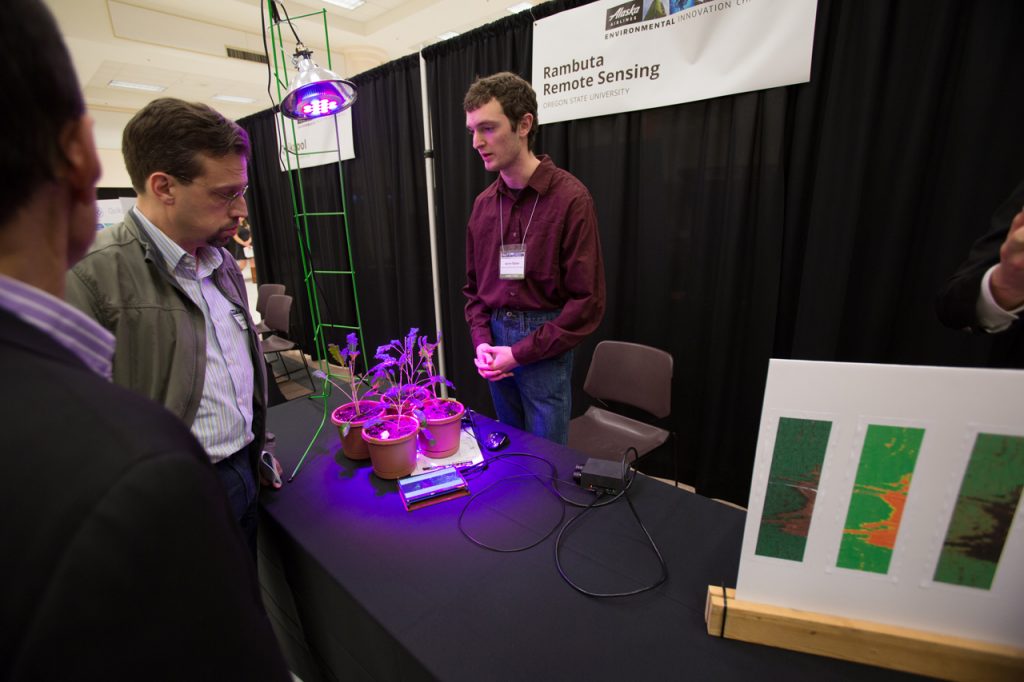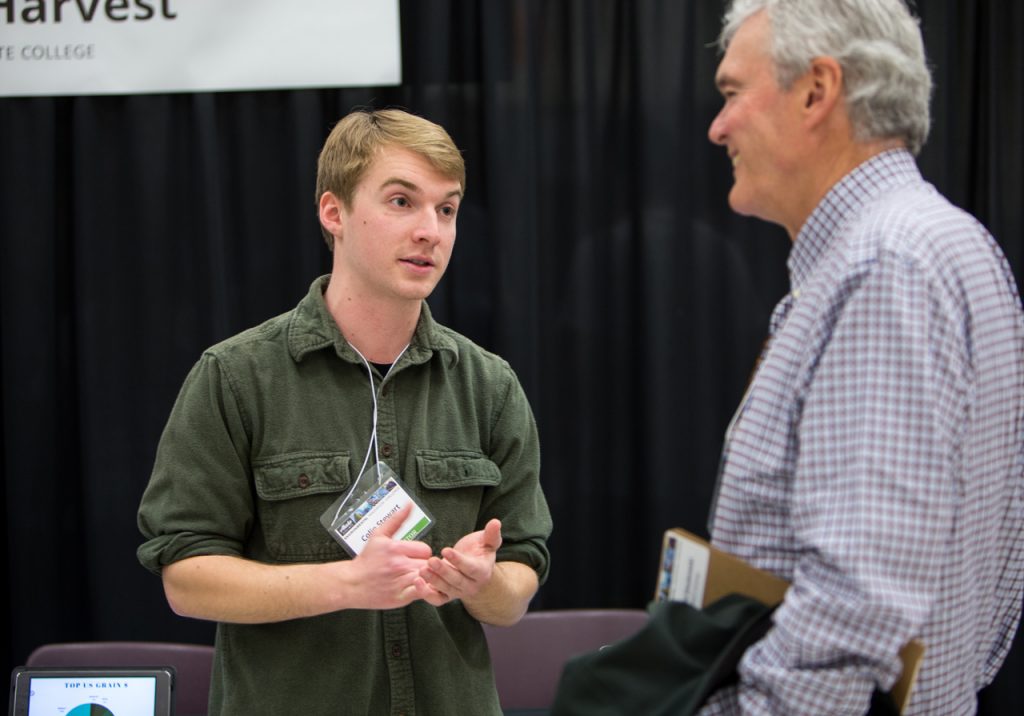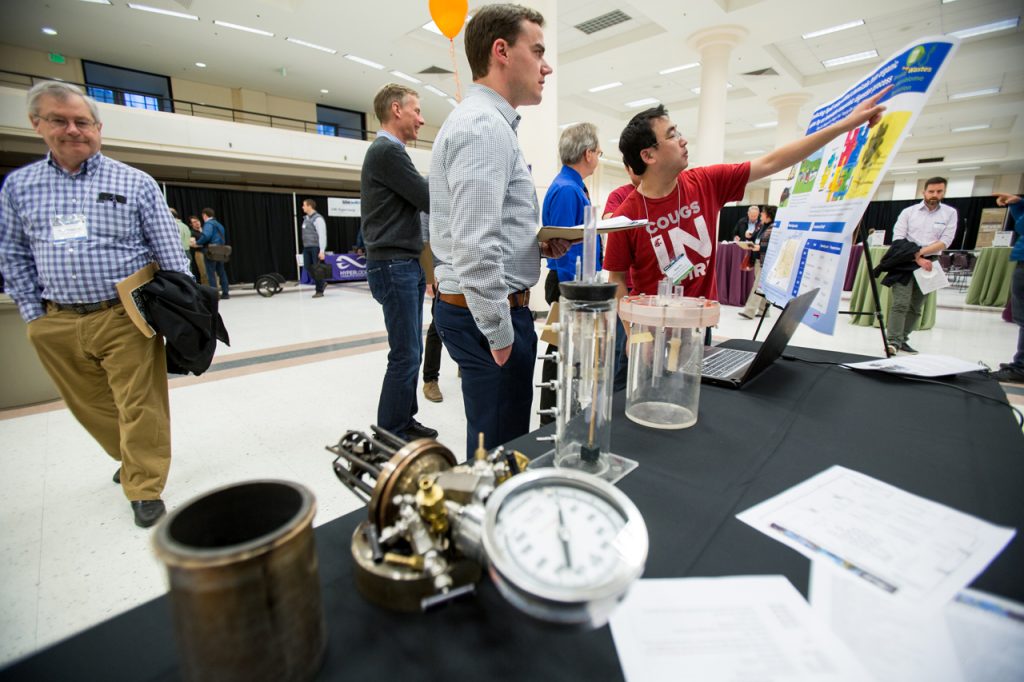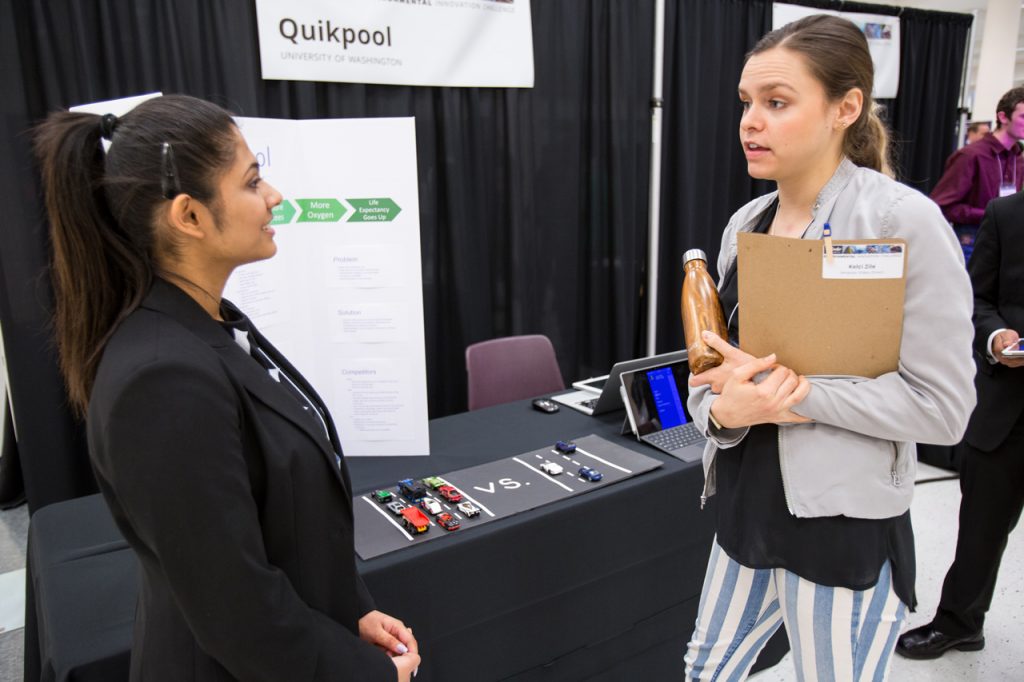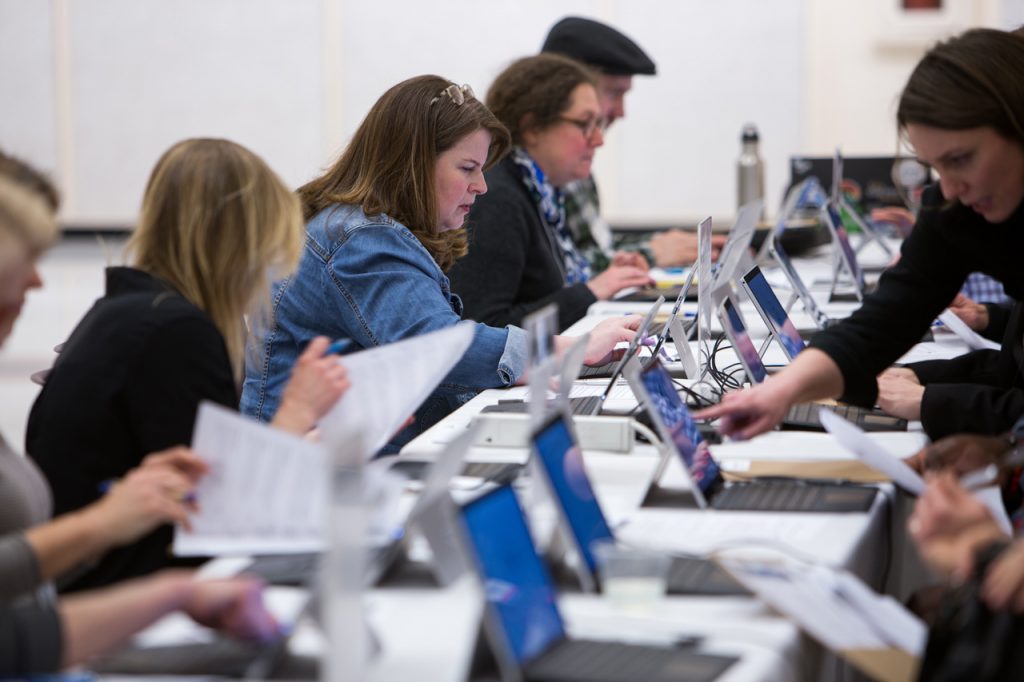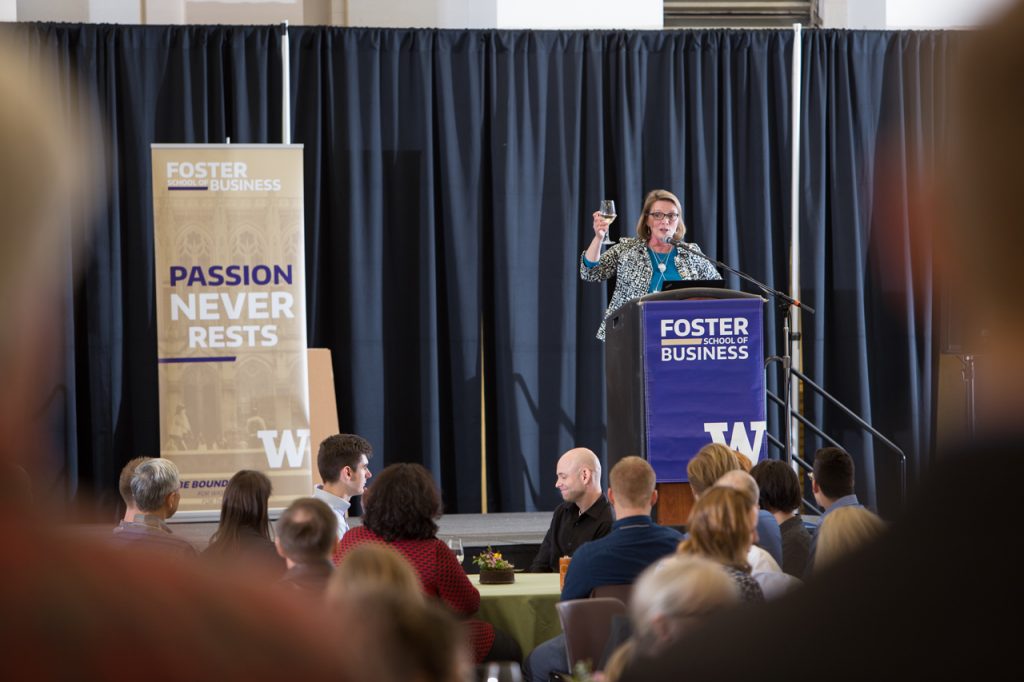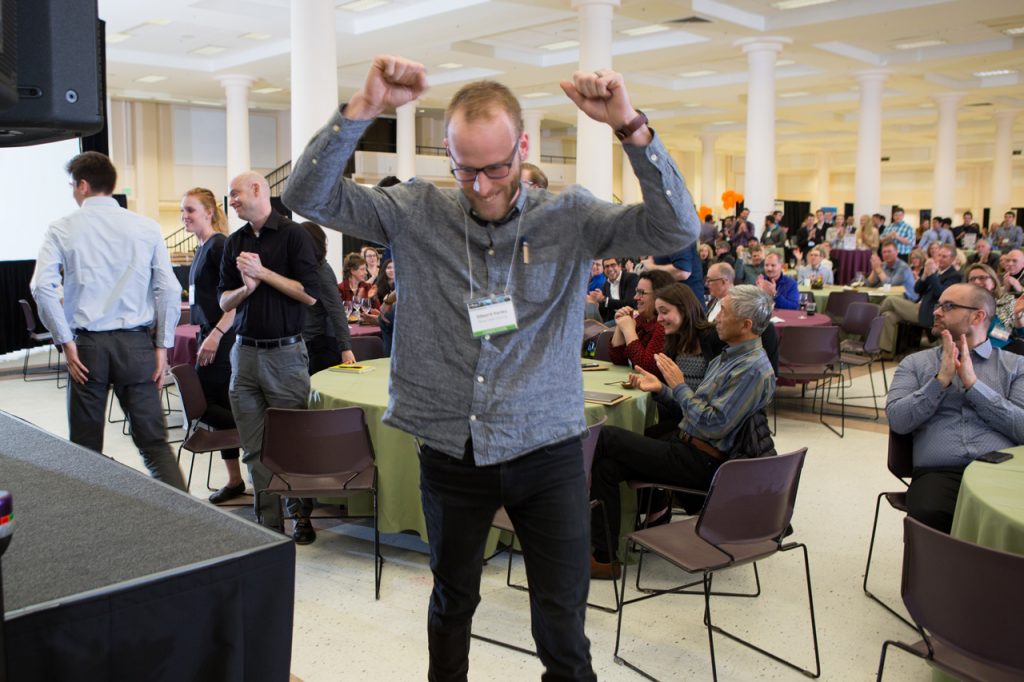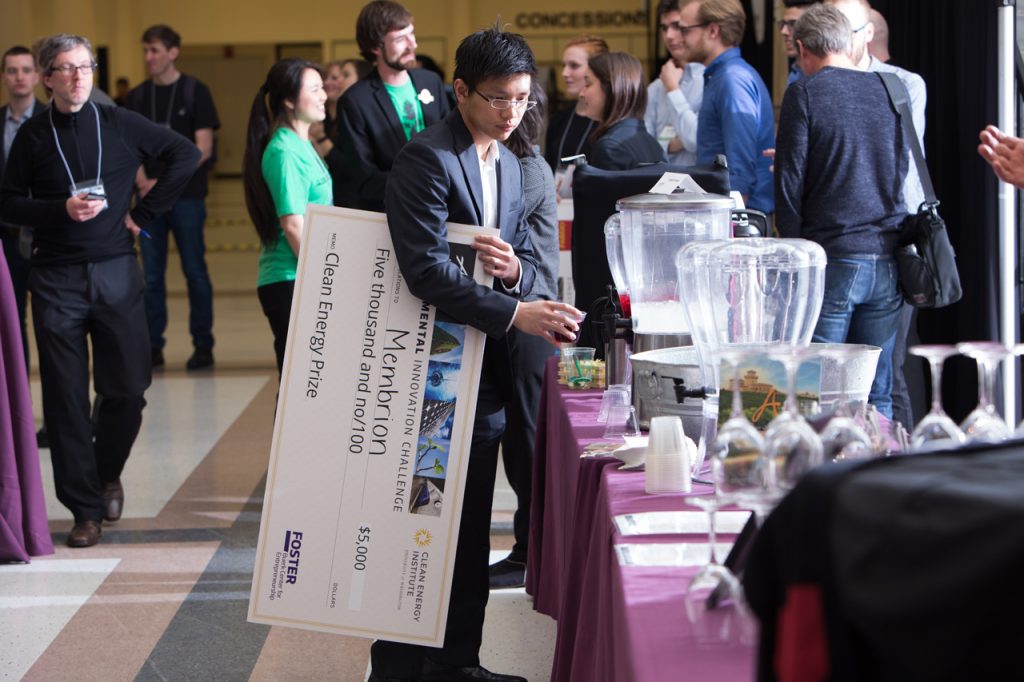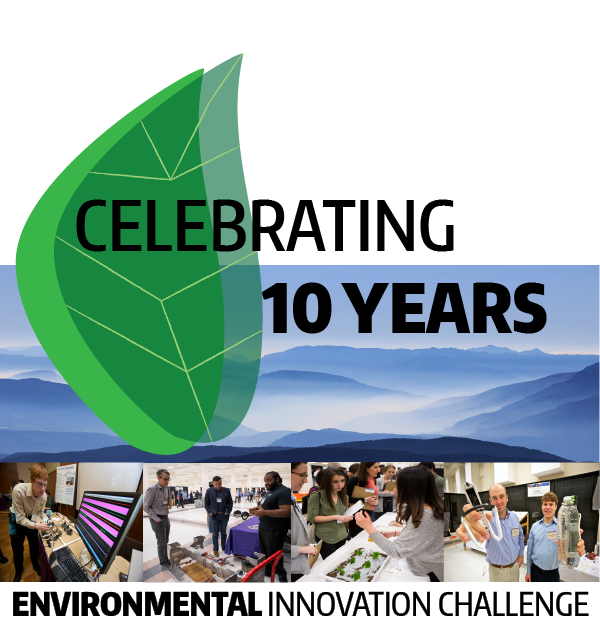Photo Diary: Alaska Airlines Environmental Innovation Challenge 2017
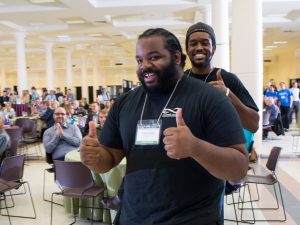 The Foster School’s Buerk Center for Entrepreneurship reaffirmed its dedication to addressing climate change and the environmental challenges our world faces through student entrepreneurship in 2017. Please enjoy this photo diary from the Alaska Airlines Environmental Innovation Challenge hosted on March 30, 2017 at the Seattle Center Exhibition Hall. Included quotes are from actual students from the University of Washington and other schools across the Northwest who participated in the event.
The Foster School’s Buerk Center for Entrepreneurship reaffirmed its dedication to addressing climate change and the environmental challenges our world faces through student entrepreneurship in 2017. Please enjoy this photo diary from the Alaska Airlines Environmental Innovation Challenge hosted on March 30, 2017 at the Seattle Center Exhibition Hall. Included quotes are from actual students from the University of Washington and other schools across the Northwest who participated in the event.
If you missed it, a recap of the event and all the winners can be found here on the Foster Blog, Xconomy, and blogs from Washington State University and Western Washington University. 2018 will be the 10th Anniversary of the Environmental Innovation Challenge. Preparation is already underway for students who have enrolled in the Autumn Quarter Environmental Innovation Practicum course (ENTRE 443/543, ENGR 498A, ENVIR 495).
2017 Grand Prize winner Nova Solar Glazing
“It was fantastic to see professionals like investors and developers react with so much enthusiasm about all of the projects at the Environmental Innovation Challenge…receiving so much positive feedback from people who are working in these industries today, validating our ideas, and encouraging us to do more… that was the most inspiring for me…”
“…At the Environmental Innovation Challenge, we were for the first time able to talk about our overall product and vision, which was really validating to our efforts after spending months developing our individual components. It showed us how many people are really out there pulling for sustainability. There are so many resources and so much passion about this that we have only just tapped into!” – Emily Bartlett, an undergrad in Industrial Design at WWU.
“Going into this competition, I had a vague idea of what it would be like, although I decided to take it as a poster session in which I was there to present the work that I have been doing as well as learn about other work that is being done by peers from other institutions. It was invigorating and inspiring to see other people’s work and get familiar with new ideas. It was also invigorating to hear the response to our project. I have always thought what we were doing was awesome, but it was great to hear that other people thought so, too.” – Amy Morren, an undergrad in Chemistry at WWU. Nova Solar Glazing developed a luminescent solar concentrator glass pane. It converts current windows into energy-producing solar windows that are both affordable and practical.
2017 Second Place Prize winner Airy
“The best part about the competition besides getting the runner-up prize, holding the giant check, and all the amazing feedback was when judges said they want to buy our battery-less smart home sensors…”
“Nothing satisfies us product creators more than people willing to use our products.” – Rahil Jain, UW graduate student in Electrical Engineering. The $10,000 Herbert B. Jones Foundation second place prize went to Airy for their battery-free, wireless home security solution that uses sensors mounted on doors or windows to harvest energy.
2017 Third Place Prize winner Lignin Biojet
“It is encouraging knowing that people care about the technology and see its potential for reducing the carbon footprint. Now, we hope to take the technology to the next level in the business world…”
“I see several advantages of the technology and hope we can scale it up for commercialization, which will help commercial airlines to achieve their goals in reducing greenhouse emissions.” – Libing Zhang, a WSU graduate student in Biological Systems Engineering. Lignin Biojet presented a technology that converts Lignin, a natural polymer that’s mainly a byproduct of the paper industry, into biojet fuel to produce a renewable alternative to conventional fuel.
2017 Clean Energy Prize winner Membrion
Judges awarded the $5,000 UW Clean Energy Institute clean energy prize, as well as a $1,000 “Judges Also Really Liked” award to Membrion. Ahead of their pitch, the team handed out safety masks to judges, as an example of the “filtering” process. “Competing in the Environmental Innovation Challenge was a great experience for Membrion. Beyond winning prize money, the thoughtful, probing feedback from an impressive network of judges in the greater-Seattle clean-tech community provided helpful direction heading into preparation for and contributing to our ultimate success at the University of Washington Business Plan Competition…”
“…of course, meeting other student innovators and seeing new ideas from across the state was incredibly inspiring. To walk away with the Clean Energy Prize from such a talented group of student teams was incredibly meaningful and gave us confidence in our vision.” – Greg Newbloom, CEO and President of Membrion, which created a low-cost high-performance membranes for advanced batteries, fuel cells, and reverse osmosis water desalination applications.
“Judges Also Really Liked” award winner GreenFeed
“GreenFeed began as our senior design project for the (UW) Chemical Engineering Department. We started the project with the goal of coming up with a workable, profitable solution to supermarket food waste but had no idea that we would end up entering the Environmental Innovation Challenge and later, the Business Plan Competition…”
“Our experience in the Environmental Innovation Challenge surpassed our wildest dreams from when we first began this project and became one of the defining experiences of our time at UW. We are so grateful for all of the support and helpful feedback we received from judges and the Buerk Center! We learned valuable skills from competing in the EIC that we never could have in a traditional classroom.” – Katherine Schultz, UW undergraduate student in Chemical Engineering. GreenFeed developed a way to convert retail food waste into a sustainable, scientifically-formulated fish feed for the agriculture industry.
“Judges Also Really Liked” award winner UW Hyperloop
UW Hyperloop is developing a sustainable form of accelerated public transportation that will cut travel times, congestion, and greenhouse gas emissions. “Everyone is committed to being a part of something bigger than themselves, grander than the team itself, and ultimately as a part of history as we think about the next mode of transportation,” UW engineering student David Coven told Geekwire.
Goodwill Hunting, student team from Presidio Graduate School
“I was pretty deflated when we didn’t win. The experience, though, honed our message and helped us progress further in the BPC a month later. Damn, did that feel better!” – Rob Goehrke, a 2018 MBA student at Presidio Graduate School. Goodwill Hunting went on to advance to the Sweet 16 Round of the UW Business Plan Competition in May with its “one-of-a-kind apparel sources from second-hand clothing.”
Sohr Performance + Nutrition, student team from the University of Oregon
“We had been developing our sports nutrition startup for about 5 months before being accepted into the Environmental Innovation Challenge. The EIC was awesome because it gave us an opportunity to think critically about the deep impact on food sustainability that actually inspired us to start our company in the first place!”
“The Challenge gave us a framework for examining and expressing our company through an ecological and industrial lens. Other business competitions simply do not respond to sustainability outside of dollars and cents of return. In short, the EIC’s contribution to our startup was in codifying our mission: To support the development of strong regional food systems by supporting athletic performance.” – Joey Jaraczewski, a graduate student in Sustainability from the University of Oregon. “Sohr” developed a line of plant-based protein beverages.
Behind The Scenes: Setting Up for the Challenge
Teams are given several hours to set up their booths before judges arrive and the competition officially begins. That leads to some great interactions between teams like SwarmFX and GreenFeed (pictured here). Students share insights on their setup, their products/technology/ideas and become stronger through collaboration. SwarmFX aimed to improve the effectiveness and reduce the ecological harm of wildfire fighting by implementing a first response, fire extinguishing small Unmanned Aircraft System (sUAS) utilizing a novel eco-sensitive foam dispersion method.
During setup, students often get a chance to interact with University leaders. Pictured here is Foster School of Business Dean Jim Jiambalvo speaking with members of the Atlas Cargo Solutions team. “Atlas” developed a bicycle trailer box that will allow UW mail carriers to reliably and securely deliver mail and packages daily to departments on the UW campus with electric bicycles rather than diesel trucks, eliminating much of the daily emissions of Mailing Services.
A tremendous amount of work by Buerk Center staff, students assistants, and volunteers make the competition a reality. Pictured here is Buerk Center Operations Manager Flora Ku speaking with students assistants Cassie Maylor, Summer Cook, Erin Nieuwenhuis, and Danielle Chalfant.
The pre-competition period also gives judges, including alumni like Max Effgen (MBA 2012) of SuperCritical Technologies (2012 Jones + Foster Accelerator, 2012 BPC “Best Innovation Idea” prize), a chance to talk shop with other entrepreneurs and investors in attendance about the competition and what they hope to see.
Judges are given packets when they arrive that has a brief description of each team among other important information about the event. Pictured here is Marlena Blonsky (’08 Womens Studies, Education), the Global Environmental Manager at Expeditors, and 2017 EIC judge.
Behind The Scenes: Welcome Reception and Competition
The 2017 Environmental Innovation Challenge took place inside the Seattle Center Exhibition Hall and featured more than 170 judges from the environmental and entrepreneurial communities, special guests and alumni, as well as 95 student competitors from seven universities and colleges. UW teams represented 22 departments in six UW colleges and schools.
Students and attendees are treated to speakers as well. During the welcome reception, Ivan Eastin, associate dean for research at the College of the Environment, spoke about the power of innovation in combating forestry problems and illegal logging, as well as the innovative use of biojet fuel from forest residuals by naming sponsor Alaska Airlines.
Students are given the opportunity to interact with the speakers and judges throughout the event. That leaves many feeling empowered to grow as entrepreneurs and continue to develop their ideas with a fresh perspective. Pictured here is a couple of members of the Drop: Trusted H20 team, which aimed to establish a world renowned brand for delivering trustworthy water to those traveling through unfamiliar lands and those who lack access to clean water with a reverse osmosis water dispensing machine.
As the competition begins, some judges approach team members directly, while others seek out the large posters detailing the problem and how the team believes their idea solves it. In the background, you can see Zong Guo, a UW graduate student in Chemistry, speaking to judges about IndieHarvest. His project creates a living indoor commercial growing system to feed urbanites, replacing vast amounts of the land, water, fuel, and waste found in traditional farming and food transport systems. The poster first made its debut at the Science and Technology Showcase competition several weeks earlier.
Other displays by student teams were more interactive. EvoEco showcased their sustainability-focused software application that combines research driven interactive signage and easy-to-understand information (which is fully-customized to a client’s business) to educate consumers on how to properly sort their trash, and the environmental importance of doing so. While EvoEco didn’t win at the EIC, it was given a grant from the Campus Sustainability Fund (CSF) to pair up with UW Recycling, the UW Garbology Project, and students from the department of anthropology to see just how effective people at the UW are at sorting their trash from their compostables.
Judges are encouraged to give feedback during the competition and many follow-up later as teams progress and enter other competitions and programs. Pictured here is WSU geology student Yujin Sakashita from Semplice responding to questions about their nutritious hydrating drink created from dairy byproduct to reduce food waste and environmental pollution.
Students were also faced with explaining exactly what their prototypes do. Undergraduate engineering student Aaron Nibler explained how its UAS mountable multispectral camera helps detect plant stress more affordably and accurately than the industry standard in hopes of increasing yield efficiency and reducing crop losses.
Teams like Pterofin brought huge prototypes related to their technology. Pterofin features UW aeronautics and astronautics and electrical engineering students who are working on special wind turbines. The turbines use unique oscillating wings to capture energy from minimal wind currents, even below 5 MPH winds, to pump water or generate electricity.
Other student teams also focused on disrupting the farming industry. Pictured here is undergraduate agricultural science student Colin Stewart from the Evergreen State College. His student venture, DirectHarvest, aimed to support farm operations transitioning to organic production systems through an online marketplace that enables farms and businesses to direct market, buy, sell, and ship QAI Certified Transitional and USDA Certified Organic agricultural products.
You may have noticed varying styles of dress at the Environmental Innovation Challenge . Some teams opted for team shirts, a more casual look, or business attire. Pictured here is TMMBA student Slava Agafonov, Material Science graduate student Robert Masse, and Arts & Sciences undergrad Ron Fan of Cloud Instruments. This team found success outside of the EIC as one of the select few to apply for and be accepted into the Amazon Catalyst program. Cloud Instruments is building a battery testing platform (both hardware and software) to increase experimental throughput and automate data analysis and visualization with the goal of accelerating the pace of battery breakthroughs.
In terms of presenting your idea, how important is your team name? Not as important as you might think, especially as you are developing the ultimate goal for your venture. This team of WSU biological systems engineering and computer science students called itself “Breaking Waste by Microbiome Revolution.” Their name helped explain their process. Many teams that enter Buerk Center competitions change their names over the years as they progressed, changed out team members, and advanced their idea. FireBee became JikoPower; Ionic Windows became Membrion; miPS Labs became Silene Biotech, etc.
The 2017 Environmental Innovation Challenge featured teams from all over the Northwest, including three from Washington State University. Hydrate 2 Overcome features bioengineering and chemical engineering students who created a water filtration system that can be manufactured by the end user from locally accessible materials. Their goal is to provide the education and supplies necessary for the people in Afghanistan to develop and maintain a filtration system to deliver clean and safe water for their needs.
Judges often want to know the makeup of the student teams to see if they can offer a wide range of expertise. Quikpool is a team of engineering and business students. Pictured here is Foster School of Business student Simran Kota speaking with a judge about the team’s plan to suggest carpools for connected users by pairing location tracking and friend circles.
Judges tracked closely which teams stood out to them before heading over to the judging area and entering their scores. Often just a few points separates the top teams from each other.
From The Sidelines: The Awards Ceremony
Alaska Airlines sustainability manager Jacqueline Drumheller toasted the hard work of the student teams and quoted Thomas Edison, who said “genius is 1% inspiration and 99% perspiration.”
Student teams and judges also received a treat at the beginning of the awards ceremony by hearing from past participants. Ryan Ahearn (left) and his team at JikoPower won the $5,000 Clean Energy Prize and $15,000 Grand Prize in 2015. Chris Metcalfe and his team from Korvata won the 2014 $10,000 Grand Prize. Both ventures are in business and thriving.
It is always a special moment when a team learns they won a prize. Pictured here is Nova Solar Glazing’s Edward Hanko, an undergraduate industrial design student from Western Washington.
Yes, teams get to keep the giant checks. No, teams don’t get to cash them like in Happy Gilmore. The actual money is handed out separately. However, the giant checks make for a fun visual as the event winds down.
See You in 2018 at the 10th Anniversary!

